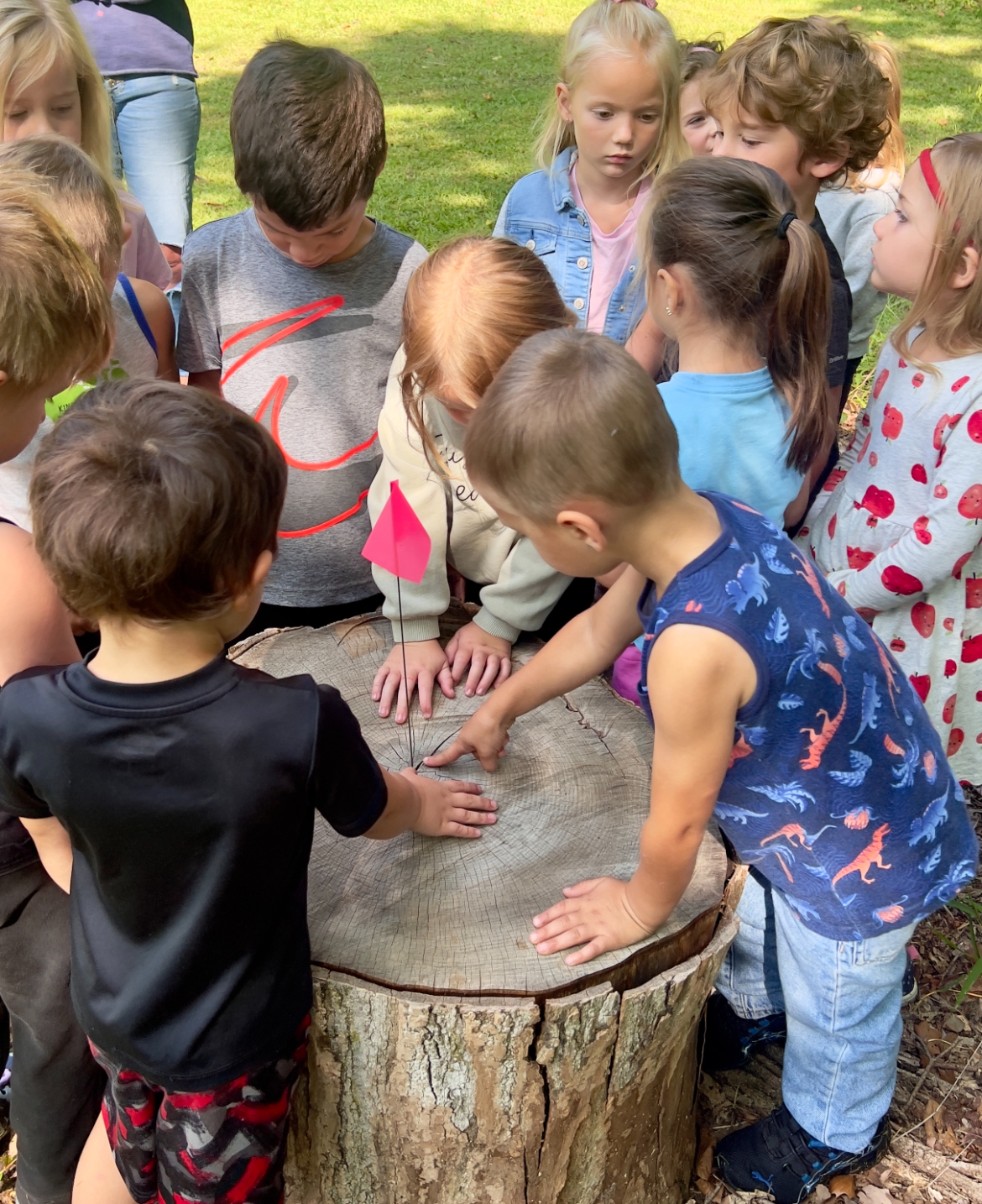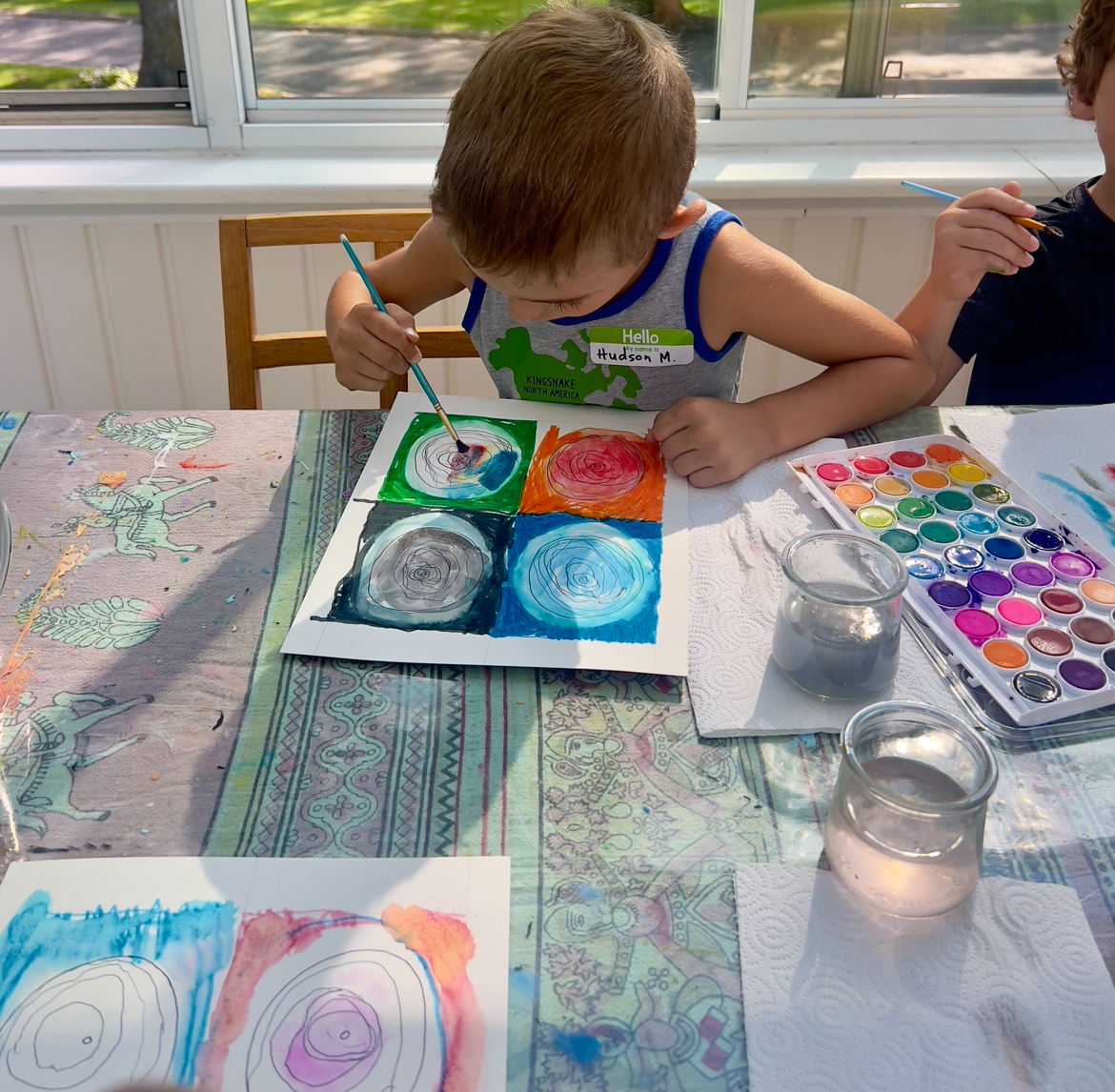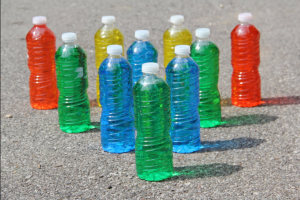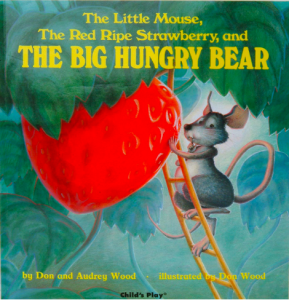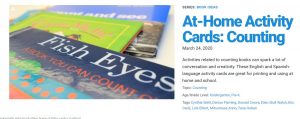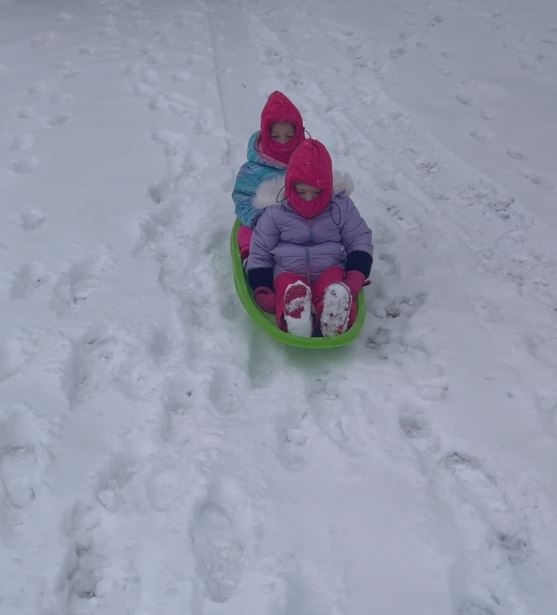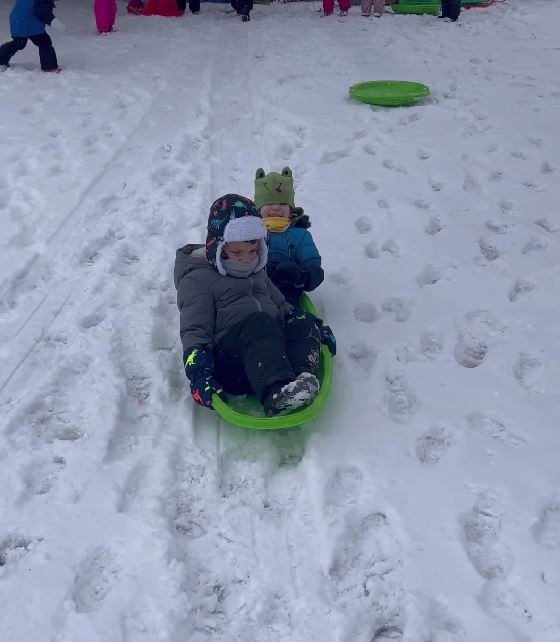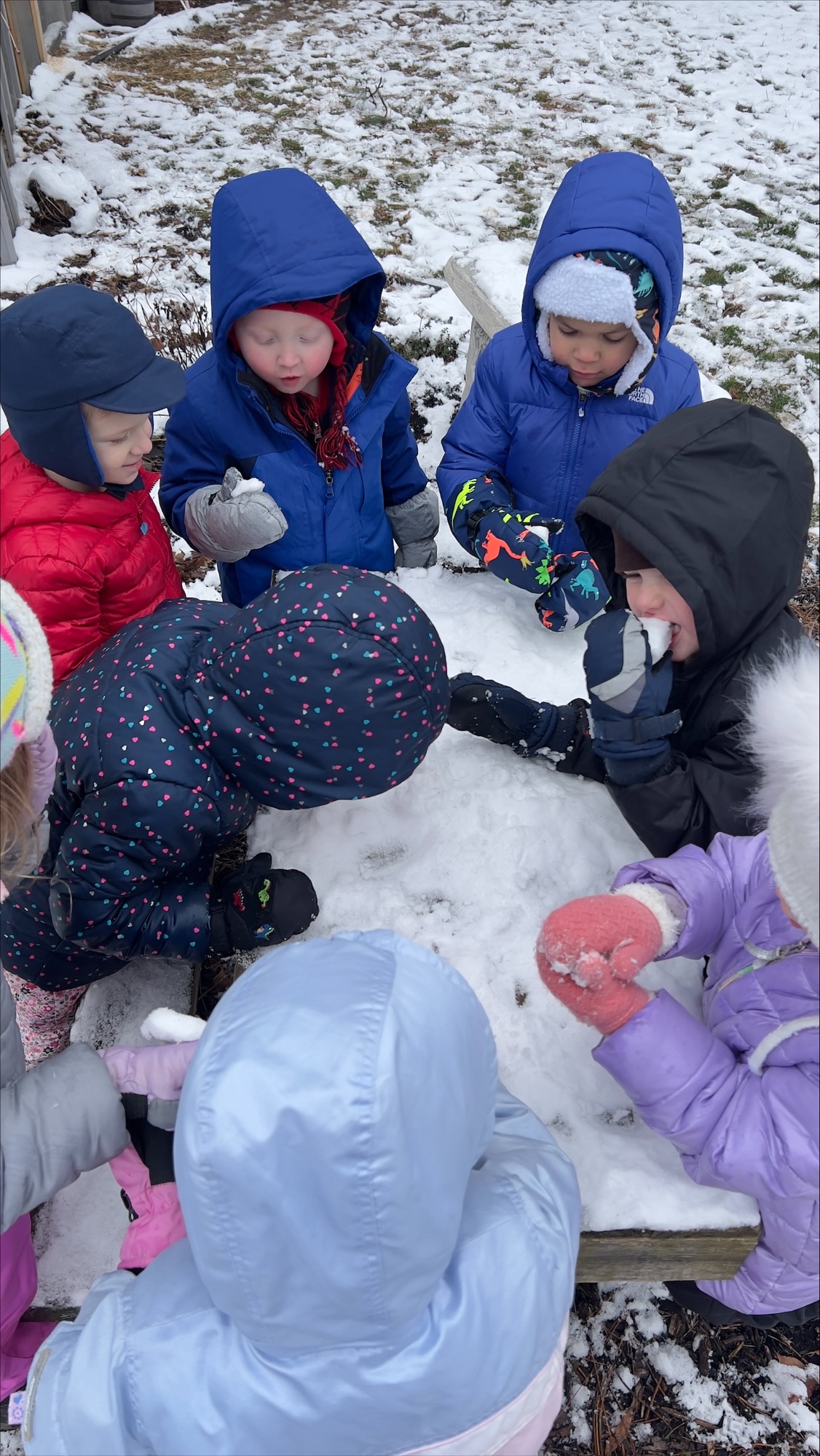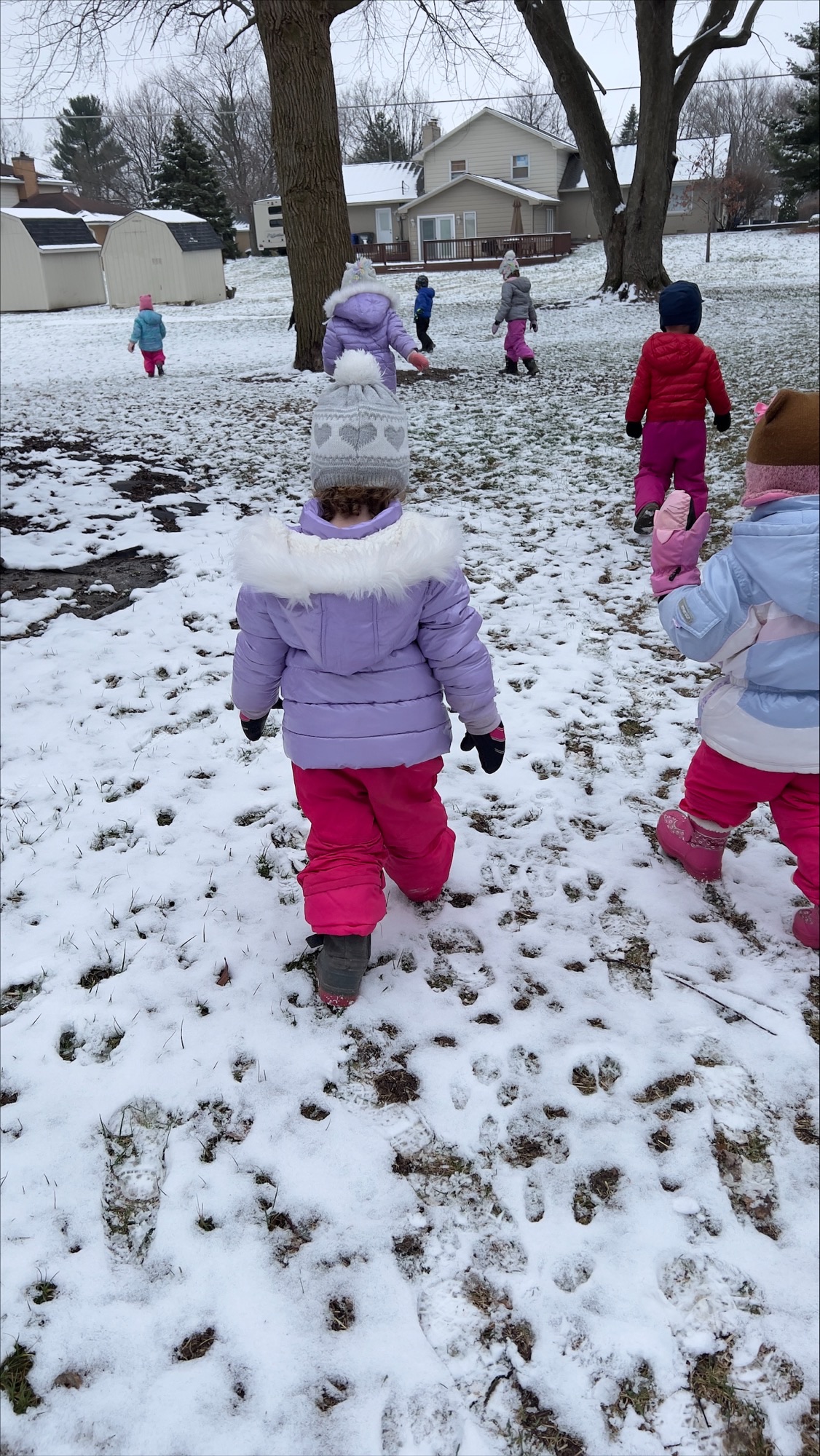There are so many benefits to reading with children…
But it can be difficult to keep a group of children engaged! Here are a few ways to make your story times more likely to bring children in and offer them the benefits that books can bring.
- Choose high quality literature. If you’re bored reading it, they’ll be bored listening. Look for interesting illustrations, distinctive characters, fun rhythm and rhyme, and relatable elements.
- Keep the books that get a good response, and shelve the ones that don’t capture their interest yet. Rotate books out when they’re getting stale and keep trying.
- Use your local library to keep an active rotation and try out new authors, illustrators, and genres. Plus, children’s librarians may have suggestions for books to read next.
- Books belong everywhere. Yes, a bookshelf or basket of books is important for children to have access to, but keep books about physics and great buildings with the blocks, keep books about plants in a waterproof box outside, and keep cookbooks with your play kitchen.
- Story time isn’t a set time— it’s whenever someone wants to read! Allowing children to engage with books when they’re interested and ready, and children who are allowed to freely choose when to listen to a story will enjoy them more. Plus, you can’t always tell who’s paying attention just based on where their body is– plenty of educators have heard a child across the room join in the chorus of a story.
- The last page isn’t a finish line: The goal is to engage children in the text. Whether that means dropping a book that the children aren’t interested in, or talking with them for 5 or 10 minutes about a single page, remember that it isn’t a race to the end. When children are asking questions or going off on tangents related to the subject or relating the story to their own experiences, they are internalizing the richness of text and its use as a tool for communication and connection.
What’s your favorite book to read with a group of children?
In most of the US, the time to start seeds is upon us! Check out this video from Town Square provider Stephanie McKinstry for some how-tos to get started.
Gardening with children is an easy way to help them expand their palates and try new foods and spend their time outside. Depending on your climate, planting seeds or sprouts now can get you snacks and meal components all the way through the end of the fall. If you’re not an experienced gardener, you may want to start with container gardens which are smaller and tend to require less upkeep as well as startup costs compared to digging in the ground. Maybe do a little bit of homework to determine the placement of your plants, but once you have a sense of the sunniest spots of your yard as well as the shadiest you can go to your local garden store to find plants that will thrive in either space. For your warm and sunny spots tomatoes and zucchini are easy to grow and just a few plants can make many pounds of produce.
The benefits of gardening with children are numerous:
- Supporting children’s exploration of the natural world and understanding of living things
- Connecting children to where food comes from
- Children are more likely to try fresh produce when they’ve grown it.
- Sharing an abundance with families can support whole family nutrition and valuable educator-family relationships
Check out For Educators – KidsGardening
There’s so much more to learn from tree rings than just the tree’s age, making it a fantastic nature study opportunity for children! This activity can be done in any season, as you only need a stump or a wood slice.
Before you get started, here are some basics about dendrochronology.
If you want to get fancy, the scientific term for the study of tree rings is “”dendrochronology.”” At its most basic level, this involves dating a tree by counting its growth rings. However, it’s also about studying the data from observing these rings.
How to Count Tree Rings
When examining a tree stump, you’ll notice thin lines and more expansive spaces between the rings. Trees add a new layer of growth every spring and summer. Trees grow much faster during the spring, so the broader spaces represent this spring growth.
In contrast, the summer (and sometimes fall) growth is slower, resulting in thin lines. Together, these two types of markings represent one year of growth. To get an accurate estimate, focus on counting only the thin lines.
What to Look for in Tree Rings and Their Meanings
When examining tree rings, pay attention to their width. If you notice some rings considerably wider than the others, this likely indicates a year with ample rainfall and growth. In contrast, if there are years where the tree rings are particularly thin, this suggests a drought, bug infestation, or some other factor that stunted growth.
Dark, black marks may indicate that the tree survived a forest fire. Additionally, if the rings are wider on only one side of the stump, it might suggest that something pushed against the tree, causing it to develop extra resistance wood on the opposite side.
Once you discover a tree stump or a tree slice, act like detectives and learn as much as you can from the tree rings. Here are some questions to consider:
- How old is this tree?
- Does it look like the tree experienced any sort of injury? (Forest fire, bug infestation, etc.)
- Ask children to make up and tell a story about the tree’s life!
While walking, try to find several different stumps to compare. Look for the oldest tree or the stump with the most unusual shape!
Extending the Learning
I love to pair related books with activities, so we read *The Berenstain Bears and Too Much Birthday.* It has a couple of pages where Papa Bear cuts down a tree, and the cubs count the rings! This was helpful for the three-year-olds, as it aided in understanding the concept and generated excitement about learning.
You can also extend this learning by incorporating the arts as I did. Provide children with small cardstock, markers, and watercolor. Ask the children to draw their observations of the tree rings using these materials.
I loved how the artwork turned out!
This short article will give you five foundational mathematical concepts to pay attention to an emphasize in your conversations and games with infants and toddlers.
Looking for an interesting textural addition to your play dough? Add birdseed and try this no-cook recipe, written to use with young children. Note: Skip the food coloring you might normally use to allow children to really notice the distinct colors of each type of seed.
- 2 ½ cups All-Purpose Flour
- ¾ cup Salt
- 2 tablespoons Cream Of Tartar
- ¼ cup Vegetable Oil
- 1 ¼ cups Boiling Water
- 2 cups birdseed
- Help children measure the dry ingredients.
- In a large bowl, have each child add an ingredient then take turns whisking together the flour, salt and cream of tartar.
- Adult adds the vegetable oil and boiling water, and using a spatula, mix until combined.
- Once it’s cool enough to handle, bring the children back together to knead the playdough in the bowl until it becomes smooth, about 2 minutes. (It may appear wet at first but will dry as you knead and the water gets fully absorbed.)
- Form the dough into a “bowl” and add birdseed to the center. Help children incorporate the seeds into the dough.
Make your own game of bowling using recycled 1 or 2 liter bottles. make them fun by decorating them with colorful masking tape. Helpful tip, seal the top on with a glue gun so the bottles do not crush easily. Use any ball to knock down the pins.
Goal: Children will develop large motor skills and hand-eye coordination with this activity.
“Music gives a soul to the universe, wings to the mind, flight to the imagination, and life to everything.”
– Plato
Sometimes you need a new artist to liven up your dance parties or offer comfort or singing together time. These are a few of our favorite artists!
Jim Gill – A energetic performer with the best banjo! Join him on YouTube for music and a reading of his funny opera
Little Miss Ann – Enjoy tunes like “Dim Sum for Everyone” and “Tong Tong Tong”
123 Andres – Grammy award winner and bilingual children music singer. Check out “Estoy creciendo y aprendiendo” or “Talentos y habilidades”
Young children are absorbing information from everything around them, but they haven’t yet developed a “filter” through which to assess that information, which is part of why it’s so important to discuss the media they are taking in with them directly.
I hope to introduce you to both specific books with excellent opportunities for conversation with young children, and also some jumping off points to carry into your discussions about books and other media as you consume it with the children in your care.
To start off, a classic: The Little Mouse, The Red Ripe Strawberry, and The Big Hungry Bear.
This is one of my favorite books to consciously introduce young children to the amount of information they can get from facial expressions and body language. Before reading it to the children, flip through and notice the huge variety of emotions that are readily apparent on the Little Mouse’s face. Pride, surprise, fear, regret, anxiety, confidence, and joy all stand out to me on different pages.
As you read, pause to notice out loud how the mouse appears to be feeling. Mimic the expression on your own face and see if the children do it as well. With older children, you can “wonder out loud” with statements like “I wonder what the mouse thinks the bear will do?” or “I wonder what he’s planning,” or invite discussion with prompts such as “I think he looks scared, here; look at his eyebrows. Do you see anything else that might tell me he’s scared?”
Using books to teach social-emotional competence gives children a low-stakes time to practice reading others’ emotions. When children haven’t had the opportunity to practice “reading” others’ faces, they have to learn on the fly, which can mean more conflict and more social struggles. For example, a three-year-old might not notice that the friend he’s chasing in a game of tag isn’t having fun anymore until that friend is in tears, rather than seeing his friend’s facial expression and other non-verbal cues and stopping the game.
Learning to read body language and facial expressions takes time and comes more easily to some children than others. When we take the time to consciously teach children about it, we can help build their empathic skills as they learn more about other people.
Early Math Collaborative is a part of Erikson institute dedicated to providing math resources and professional development for educators and administrators.
The collaborative recently launched Download format; making resources available for immediately download and printable for everyone.
Enjoy these at-home activities cards to help children explore numbers, shapes, sorting and more!
At-home activities cards are available in English and Spanish
For many of us, winter is sticking around for a few more weeks, which means more fun in the snow. Remember, there is no such thing as bad weather; there is just bad clothing.
Playing outside during cold weather is very beneficial for children.
It builds resilience, helping children learn to cope with uncomfortable or challenging situations, and builds mental and emotional strength.
It improves creativity and imagination; being outside provides endless imaginative play and exploration opportunities.
It promotes physical activity, playing in the snow, and engaging in winter sports like sledding, skating, and skiing supports physical activity and healthy habits.
Lastly, it enhances sensory experiences; snow, and ice provide unique sensory experiences that stimulate and calm the senses, helping children develop sensory integration skills.
Stephanie McKinstry owner of Caterpillar Clubhouse Nature Preschool, shares some fun photos of her program enjoying the snow!


